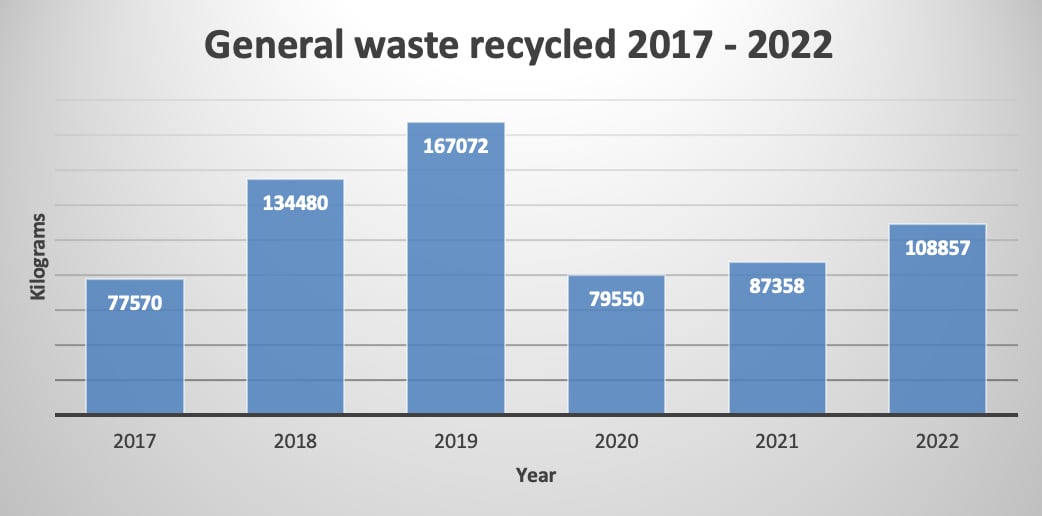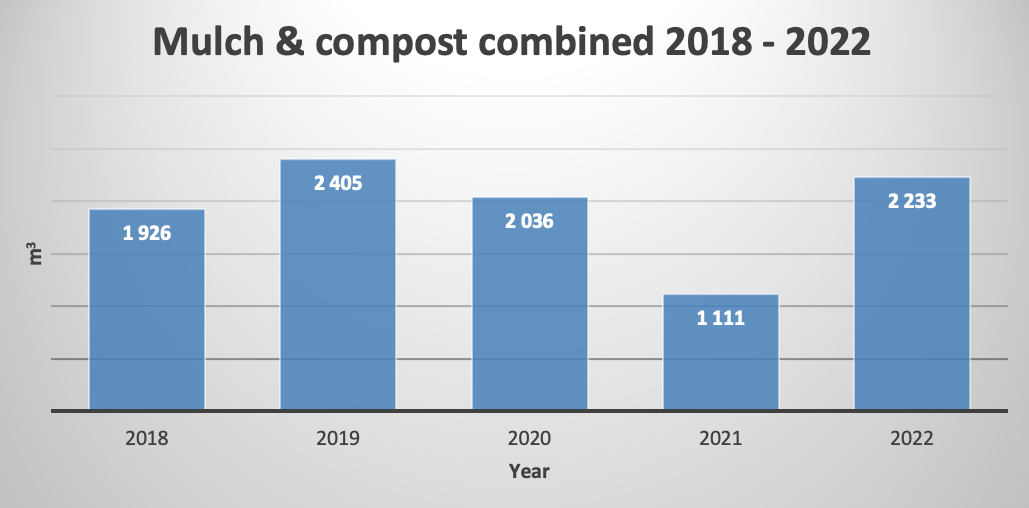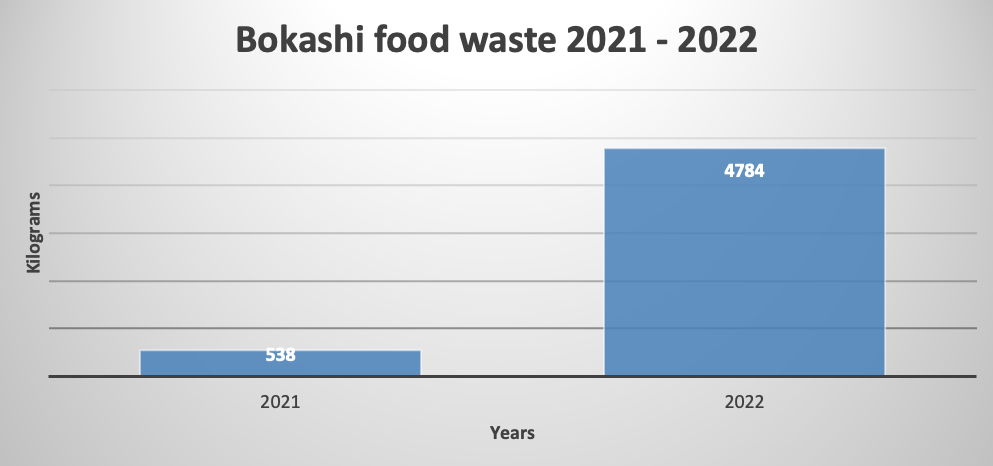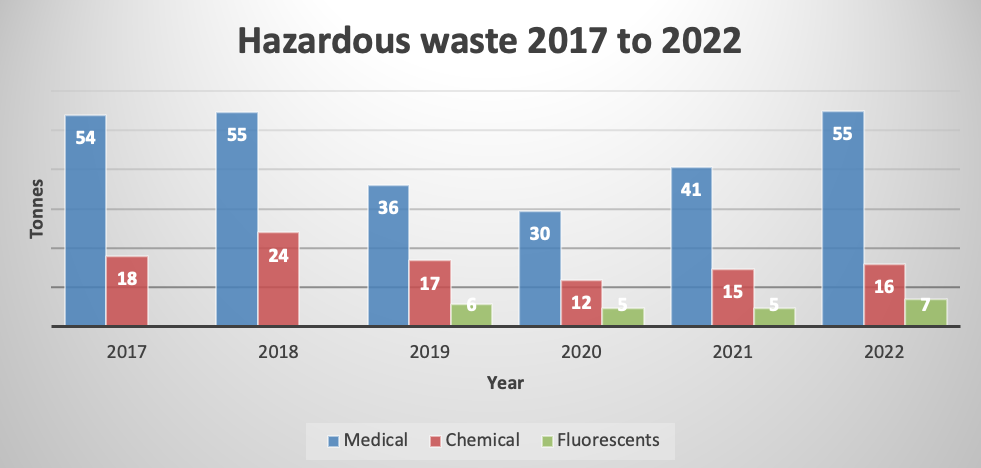The University of Pretoria (UP) uses several mechanisms to manage general waste collection and removal from the various campuses. The aim of these mechanisms is to reduce the University carbon footprint by minimising general waste which goes to landfill.
Waste is separated into various categories for recycling, namely aluminium (cool drink tins), paper and cardboard, glass and plastic. The university’s Department of Facilities Management (Campus Services Division) engages the entire campus community in efforts to reduce waste to landfill through recycling and waste management programmes.

The university’s widespread land and facility footprint requires a focus on land management and biodiversity, and brings together much of the sustainability efforts already mentioned. Managing the sports fields is central to enabling the university’s core functions, gardens across the campus provide opportunities to live in closer harmony with nature, and biodiversity has to be protected with new infrastructure developments. In addition, the university is associated with sensitive water ecosystems of which the resilience needs to be strengthened in the face of upstream urban development.
Locally produced compost, vermicast granular fertilizer, organic bio-stimulant, and organic liquid fertilizer are used. The organic approach has returned the soil to a healthier and more balanced state, with recovery of natural microbes and earthworms. The recovery rate of the turf has increased, and it has become healthier and more durable. Less irrigation is required, and the need for chemical fungicides, insecticides, and herbicides, with their potential for human harm, has been eliminated. The broader use of compost and mulch in gardens has contributed to reduced water requirements and consequently a cost reduction.

Bokashi is a composting method that is used for all organic food waste, including meat, dairy, and fats. Japanese researchers developed it for fermenting food before composting it. In this process, lactobacillus bacteria predigest waste matter to reduce composting time and eliminate odours.
The University of Pretoria started with this process at the Hatfield campus in 2019 and since then it has been expanded to include other campuses.

In terms of the hazardous waste management, the Facilities Department (Campus Services Division Waste and Environmental Management) is responsible for the removal and safe disposal of all the hazardous waste generated on the five campuses of the University.
Hazardous waste falls into two main categories namely:
Biomedical waste is any kind of waste containing infectious (or potentially infectious) materials. It may also include waste associated with the generation of biomedical waste that visually appears to be of medical or laboratory origin (such as packaging, unused bandages, infusion kits, etc.), as well research laboratory waste containing biomolecules or organisms that are restricted from environmental release.
Biomedical waste is generated from biological and medical sources and activities, such as the diagnosis, prevention, or treatment of diseases. Common generators (or producers) of biomedical waste include hospitals, health clinics, nursing homes, medical research laboratories, surgeries of physicians, dentists, and veterinarians, home health care, and morgues or funeral homes. In healthcare facilities (for instance hospitals, clinics, doctor's surgeries, veterinary hospitals and clinical laboratories) waste with these characteristics may alternatively be called medical or clinical waste.
Chemical hazardous waste is a solid, liquid, or gaseous material that displays either a hazardous characteristic or is listed by name as a hazardous waste. There are four characteristics of chemical wastes that are considered hazardous. These are ignitability, corrosivity, reactivity and toxicity. These types of hazardous waste must be categorised in terms of their identity, constituents, and hazards so that they may be safely handled and managed. Chemical waste is a broad term and encompasses many types of materials. Consult the Material Safety Data Sheet (MSDS), product data sheet or label for a list of constituents. These sources should state whether this chemical waste requires special disposal.
Electronic waste or e-waste refers to discarded electrical or electronic devices. Used electronics which are destined for reuse, resale, salvaging, recycling, or disposal are also considered e-waste. Informal processing of e-waste in developing countries (such as South Africa) can lead to adverse effects on human health and environmental pollution.
The division Waste Management can assist with the removal and disposal of eWaste.

Copyright © University of Pretoria 2025. All rights reserved.
Get Social With Us
Download the UP Mobile App